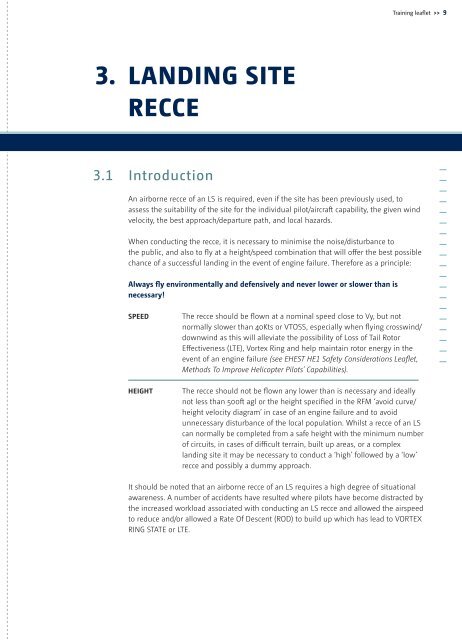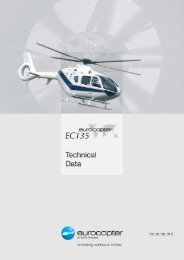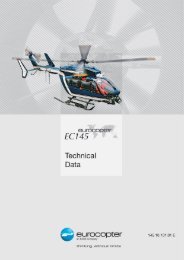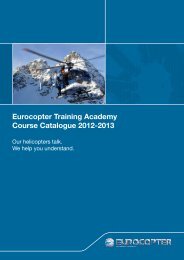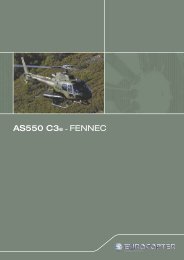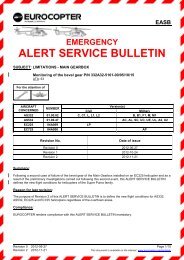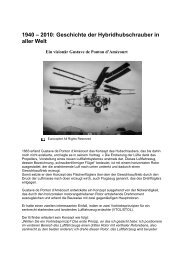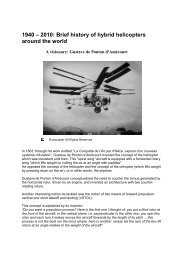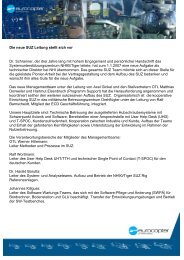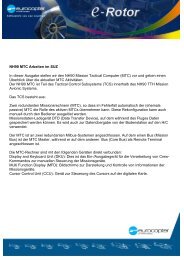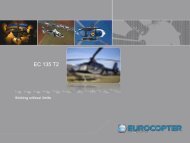EHEST Off-airfield Landing Site Operations - Eurocopter
EHEST Off-airfield Landing Site Operations - Eurocopter
EHEST Off-airfield Landing Site Operations - Eurocopter
Create successful ePaper yourself
Turn your PDF publications into a flip-book with our unique Google optimized e-Paper software.
3. LANDING SITE<br />
REccE<br />
3.1 Introduction<br />
Training leaflet >> 9<br />
An airborne recce of an LS is required, even if the site has been previously used, to<br />
assess the suitability of the site for the individual pilot/aircraft capability, the given wind<br />
velocity, the best approach/departure path, and local hazards.<br />
When conducting the recce, it is necessary to minimise the noise/disturbance to<br />
the public, and also to fly at a height/speed combination that will offer the best possible<br />
chance of a successful landing in the event of engine failure. Therefore as a principle:<br />
always fly environmentally and defensively and never lower or slower than is<br />
necessary!<br />
SpEEd The recce should be flown at a nominal speed close to Vy, but not<br />
normally slower than 40Kts or VTOSS, especially when flying crosswind/<br />
downwind as this will alleviate the possibility of Loss of Tail Rotor<br />
Effectiveness (LTE), Vortex Ring and help maintain rotor energy in the<br />
event of an engine failure (see <strong>EHEST</strong> HE1 Safety Considerations Leaflet,<br />
Methods To Improve Helicopter Pilots’ Capabilities).<br />
HEigHt The recce should not be flown any lower than is necessary and ideally<br />
not less than 500ft agl or the height specified in the RFM ‘avoid curve/<br />
height velocity diagram’ in case of an engine failure and to avoid<br />
unnecessary disturbance of the local population. Whilst a recce of an LS<br />
can normally be completed from a safe height with the minimum number<br />
of circuits, in cases of difficult terrain, built up areas, or a complex<br />
landing site it may be necessary to conduct a ‘high’ followed by a ‘low’<br />
recce and possibly a dummy approach.<br />
It should be noted that an airborne recce of an LS requires a high degree of situational<br />
awareness. A number of accidents have resulted where pilots have become distracted by<br />
the increased workload associated with conducting an LS recce and allowed the airspeed<br />
to reduce and/or allowed a Rate Of Descent (ROD) to build up which has lead to VORTEX<br />
RING STATE or LTE.


